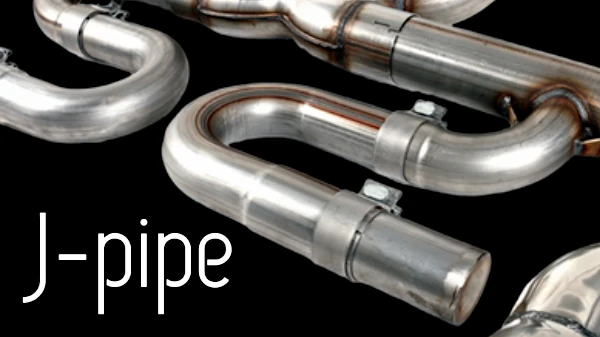Quarter Wave Resonator (J-pipe): Fine-Tuning Sound in Automotive Exhaust Systems
In the realm of automotive engineering, every detail, no matter how seemingly insignificant, can have a profound impact on a vehicle's overall performance and the driving experience. One often-overlooked component that plays a crucial role in both sound quality and engine efficiency is the "Quarter Wave Resonator." This unassuming yet intricate device holds the key to unlocking a vehicle's acoustic potential while enhancing its mechanical prowess. Let's delve into the world of quarter wave resonators, exploring their intricate workings and their significance in the intricate symphony of an automotive exhaust system.
Delving into the Quarter Wave Resonator's Essence
A quarter wave resonator, as its name suggests, is a specialized acoustic component within an exhaust system meticulously designed to interact with sound waves in a specific manner. Its length, typically calibrated to a quarter of the wavelength of a particular sound frequency it aims to manage, is the crux of its operation. These resonators are renowned for their ability to target and attenuate specific frequencies within the exhaust noise spectrum, effectively sculpting the vehicle's acoustic signature.
The Science Underpinning the Resonance
The operation of a quarter wave resonator is rooted in the principles of acoustic resonance, a phenomenon where sound waves interact with an object or medium to create a reinforcing or canceling effect. As exhaust gases exit the engine and traverse the exhaust pipe, they generate sound waves at various frequencies. Upon encountering the quarter wave resonator, these waves encounter an obstacle tuned to a specific frequency. At this point, a phenomenon called destructive interference occurs, where the waves interact in a way that cancels out or significantly reduces the targeted sound frequencies.
Benefits and Applications: Unlocking Sound and Performance
Quarter wave resonators are invaluable tools in the automotive world for several reasons. They provide a high level of precision in controlling exhaust noise, allowing engineers and enthusiasts to fine-tune the sound of a vehicle's exhaust system to match their preferences, whether it's a deep growl, a high-pitched scream, or any other desired tone. This ability to tailor the exhaust note is a key element in creating a personalized and engaging driving experience.
While the primary function of a quarter wave resonator is sound management, it can also have a notable impact on engine performance. When correctly designed and installed, these resonators can enhance the dynamics of exhaust flow, potentially leading to improved engine efficiency and increased power output. This is because by effectively managing specific frequencies, quarter wave resonators can reduce backpressure and optimize the exhaust system’s overall efficiency.
Installation and Design: A Symphony of Precision
Quarter wave resonators come in various designs, but they typically consist of a straight tube with one open end and one closed end, often capped with a solid plate. The key to their effectiveness lies in precise design, including the length of the resonator and its location within the exhaust system. By strategically placing these resonators, automotive engineers can target specific frequencies and achieve the desired acoustic characteristics. The precise tuning of these resonators is akin to fine-tuning an instrument, ensuring that the exhaust system produces a harmonious and pleasing sound.
Conclusion: A Symphony of Sound and Performance
Quarter wave resonators are a small yet pivotal part of automotive exhaust systems, influencing both the sound and performance of a vehicle. Their ability to precisely control sound frequencies makes them a valuable asset for those seeking an optimal balance between engine efficiency and auditory experience.
Whether you're a dedicated automotive enthusiast, an engineer, or simply a driver who appreciates the perfect exhaust note, the quarter wave resonator exemplifies the fine-tuning and precision involved in creating a harmonious synergy between sound and machinery in the automotive world. It's an essential piece in the puzzle of designing the ideal driving experience, ensuring that every drive is an orchestra of sound and performance.
